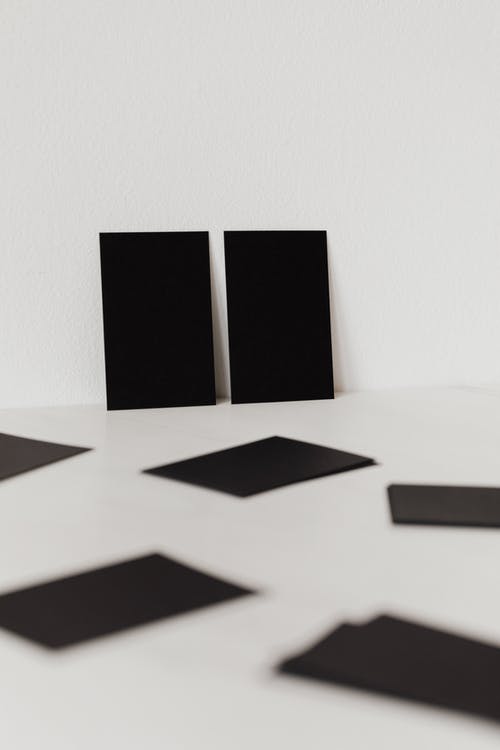So you’ve decided to design your own business cards. And whether you’re a student wanting to save money, have a pre-existing design you want to use, or you’re a designer yourself, you deserve professional looking business cards to help promote your business.

Standard Business Card Dimensions
Traditionally, the standard business card size has been 90 x 55 millimetres. However, the new standard is 86 x 55 millimetres, which allows business cards to more easily fit inside of a wallet.
How to Set Up Your Business Card Design
With smaller business cards becoming more popular, you’ll have to consider different design principles & spacing elements of the card.
With a smaller card, you’ll need to reduce the size of your logo & font, to ensure that you can comfortably fit all of the relevant company information on the card at a size that is legible.
When designing your cards in Adobe Illustrator or another design software, you should begin with a correctly-sized template to avoid having to resize the elements later on.
Important to note however, that you should leave 1-3 millimetres on the perimeter to allow for bleed from the printer.
Thus, if you’re printing a 90 x 55 mm card, your file/template size needs to be at least 93 x 58 mm. And if you’re using the smaller sized card, your file/template size should be at least 89 x 58 mm.
Or, if you prefer to design on a larger template, simply create a business card shape on the template and design within the box dimensions.
Other Things to Consider
Logos & Images
When choosing which logos & fonts to use on your business cards, it’s important to consider how they will be sized on such a small canvas.
Typically, photos or images taken from the web will not size correctly and will appear blurry. This is due to the difference in resolution between screens (720 dpi) and print (300 dpi). Additionally, any photos, vectors, or SVG files that appear on your business card must be your own, or have been previously given permission from the original owner to use.
Fonts
Before exporting your file for print, be sure to convert the fonts to paths. This will convert the editable text into a graphic or image.
Doing so will ensure that the font remains the same if transferred between devices. If the font you choose to use is not available on another device, then the text will not appear in the same font.
As with photos & images, you must also confirm that you have the legal right to use the font. Most stock fonts in design software are approved for commercial use, but it’s best to confirm before print.
Saving Files
Common file types for digital files are PNG, JPEG, and PDF. In the case of business cards, we prefer PDF types, as they compress the image less than PNGs and JPEGs, preserving the original quality.
Next Steps
If you’ve designed a beautiful business card and are ready to print, we can help! We’ll take your design file, run it through pre-press checks, and add it to the queue for professional digital printing.
Then, we’ll deliver you the finished product so you can start handing out your business cards.
OR, if you need help designing your business cards, we can start there. Our designers will meet with you and determine the best path forward regarding fonts, colours, and more.




